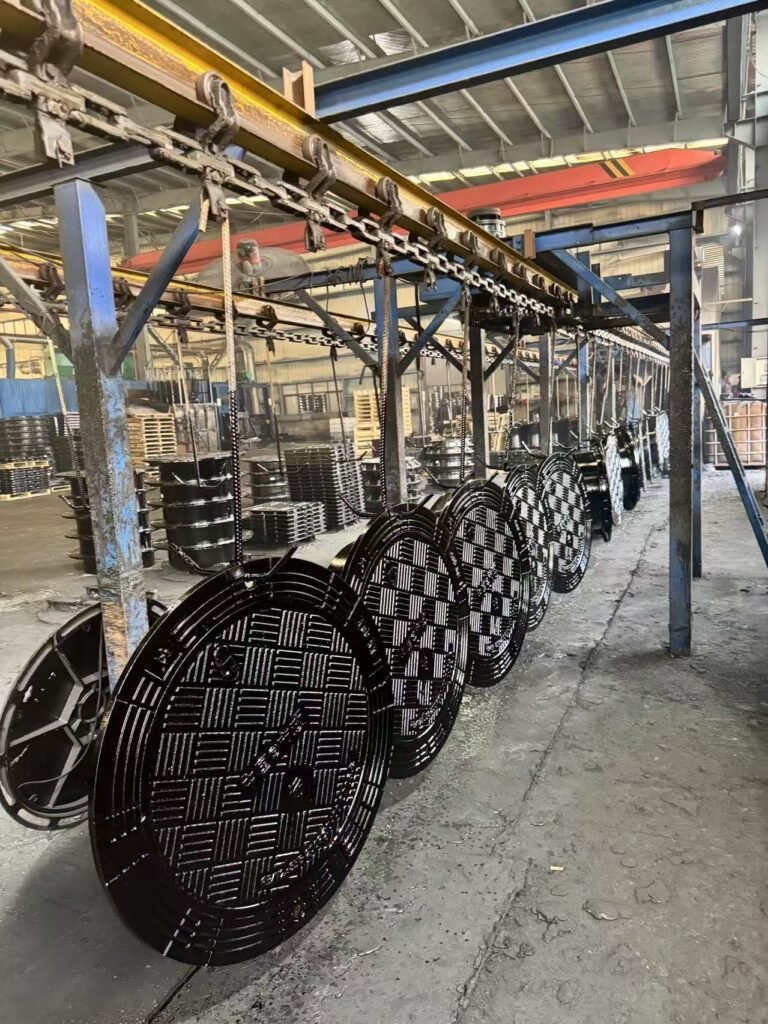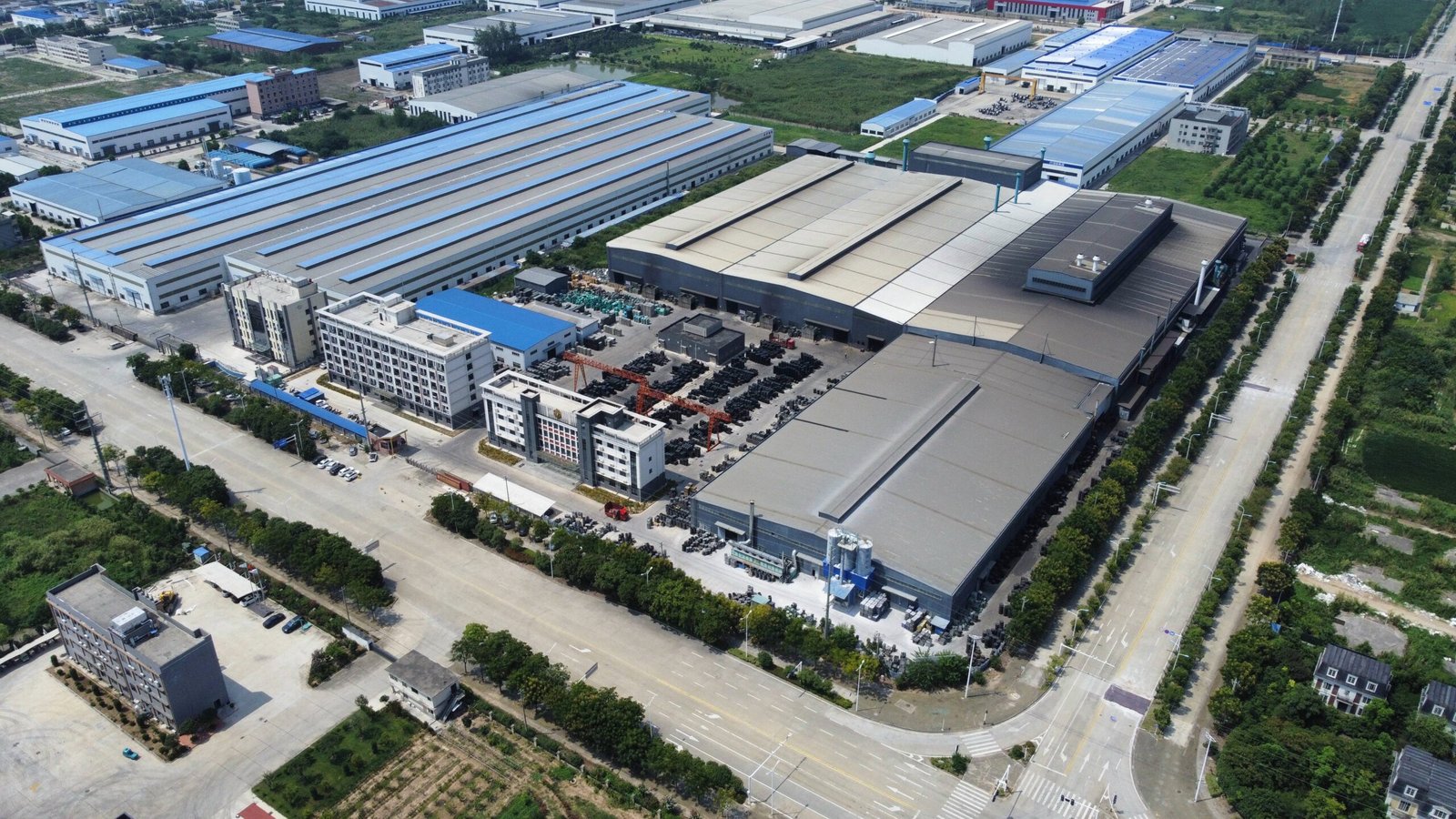I. Circular Covers: A Century-Proven Engineering Optimum
In municipal engineering, manhole cover shapes are no accident. Circular design is the gold standard validated by a century of practice, grounded in precise engineering logic:
- Absolute Anti-Fall Mechanism
- Geometric Advantage: The circle is the only 2D shape with a constant diameter. No matter how rotated, its outer edge always exceeds the inner diameter of the manhole, eliminating fall risks (Fig. 1).
- Comparative Test: Square covers may fall in if tilted >30° diagonally, while circular covers remain secured by the manhole flange at any 360° rotation.
- Mechanical Superiority Over Polygons
- Uniform Load Distribution: Under traffic, circular structures evenly disperse pressure across the circumference (per Lamé stress model), preventing stress concentration fractures.
- Data Verification: Ductile iron circular covers withstand >50 tons, whereas square ones develop micro-cracks at corners, reducing load capacity by 35%.
- Zero-Error Omnidirectional Installation
- No Orientation Constraints: Maintenance crews can seal manholes instantly without alignment, boosting nighttime repair efficiency by >40% (municipal data).
- Anti-Displacement Design: Tapered fit (3°-5°) between cover and manhole creates self-locking against hydraulic displacement.

II. Economic Revolution in Manufacturing
- Mold Cost Savings
- Round molds eliminate corners, improving molten iron flow by 27% and reducing defects to <0.5% (vs. 3%-5% for polygonal molds).
- Transport Stacking Optimization
- Circular covers nest during shipping, increasing truck capacity by 300%. Square covers require spacers, utilizing <40% of space.
III. Global Standards: Scientific Consensus
From China’s GB/T 23858 to EU’s EN 124, circular covers are codified in 24 international standards with unified parameters:
Diameters:
- Light-duty: Φ600mm (sidewalks)
- Heavy-duty: Φ700mm (roadways)
Taper tolerance: 3°±0.5° (ensures self-locking)
IV. Square Covers: Compromise, Not Preference
Engineers resort to square covers only when:
- Space constraints exist (e.g., narrow cable tunnels).
- Matching square equipment bases (e.g., transformer access).
Such covers require reinforcement:
- Corner thickness increased to 1.8× center thickness.
- Added cross ribs.

Conclusion: The Irreplaceable Circular Cover
As "silent guardians" of municipal safety, circular covers combine geometry + mechanical reliability + cost efficiency to shield urban infrastructure. The solid clunk beneath vehicle wheels echoes a century of engineering wisdom safeguarding every inch of our roads.




